
Date: July 9, 2021
Location: Lat: 36.300876°, Lon: 51.347289°
Dive depth range: 2,082 - 2,331 meters (6,831 - 7,648 feet)
Access Dive Summary and ROV Data
Few corals are as recognizable as the beautifully spiral-shaped octocorals in the genus Iridogorgia. Their flexible branches come off of a main, spiraled axis, with individual coral polyps sitting out on these branches, catching food as it drifts by in the water column. This one is living up to its full scientific name of Iridogorgia magnispiralis. It was seen during Dive 06 of the 2021 North Atlantic Stepping Stones expedition, which was the first time we’d seen this species during the expedition. Video courtesy of NOAA Ocean Exploration, 2021 North Atlantic Stepping Stones: New England and Corner Rise Seamounts. Download largest version (mp4, 76.9 MB).
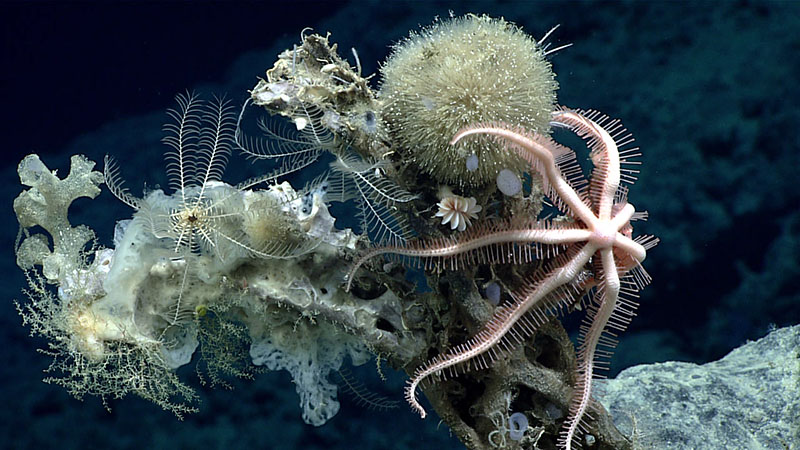
A brisingid sea star, several crinoids, a coral (Desmophyllum dianthus), and other organisms were seen living on a dead sponge skeleton during Dive 06 of the 2021 North Atlantic Stepping Stones expedition. Image courtesy of NOAA Ocean Exploration, 2021 North Atlantic Stepping Stones: New England and Corner Rise Seamounts. Download largest version (jpg, 1.2 MB).
For the sixth dive of the 2021 North Atlantic Stepping Stones expedition, we explored Castle Rock Seamount, which, based on current mapping coverage and satellite altimetry data, is believed to be the northernmost seamount of the Corner Rise Seamount Chain.
A wide range of seafloor environments were encountered during the dive, beginning with a mixed rock outcrop and sediment slope, which transitioned into a steep section of exposed lava flow morphologies, and finally a series of alternating, low-relief rock and sedimented areas. At the end of the dive, we observed a region of thicker and more extensive sediment cover and rocks with a distinctly different texture that may have been sedimentary (carbonate) rather than volcanic in origin.
General biological diversity was higher during this dive than the previous five dives of the expedition, though instances of marine life were spread across the entire dive transect in lower-density patches. Echinoderms dominated the dive, with observations made of crinoids, sea stars, brisingid and brittle stars, and sea cucumbers. We also saw several species of coral that had not yet been seen during the previous dives of the expedition and while sponges were present throughout the dive, they were in lower abundance than seen on the previous dive.
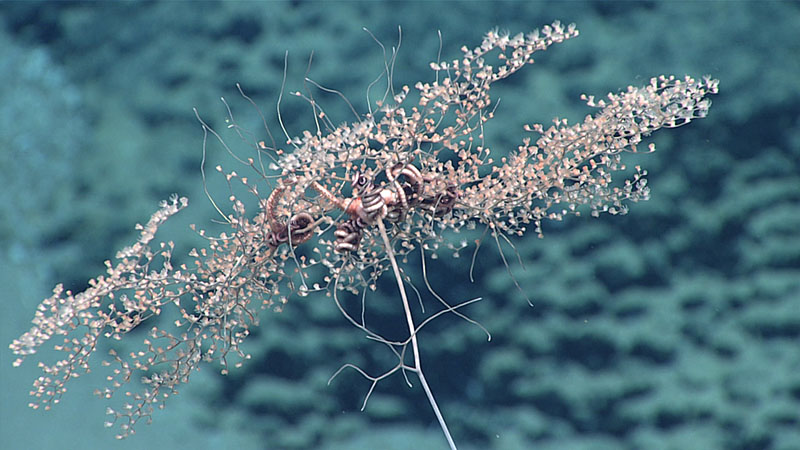
A brittle star (Ophiocreas sp.) clings to the branches of a beautiful, umbrella-like Metallogorgia coral. These two organisms have an interesting relationship — they are seen together starting as juveniles and continue on to grow into adulthood together. Exactly how this relationship is established is not well understood. Image courtesy of NOAA Ocean Exploration, 2021 North Atlantic Stepping Stones: New England and Corner Rise Seamounts. Download largest version (jpg, 1 MB).
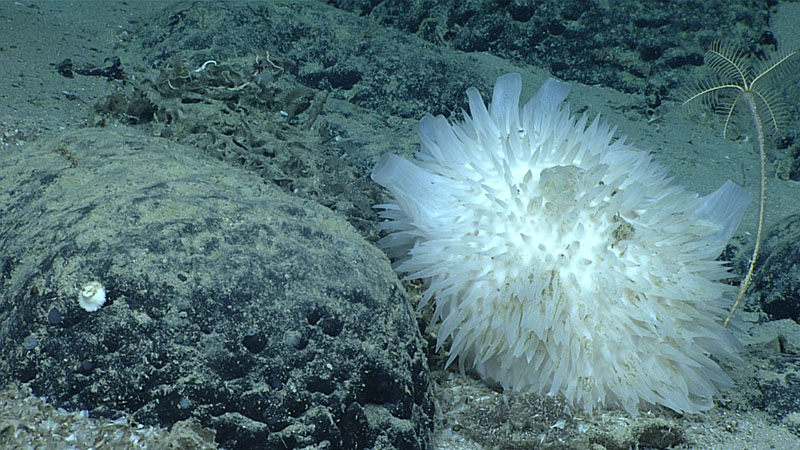
Although not as plentiful as they were on Dive 05 of the 2021 North Atlantic Stepping Stones expedition, sponges were fairly well presented during the sixth dive, including several of these curious-looking sponges belonging to the genus Polymastia. Image courtesy of NOAA Ocean Exploration, 2021 North Atlantic Stepping Stones: New England and Corner Rise Seamounts. Download largest version (jpg, 1.3 MB).
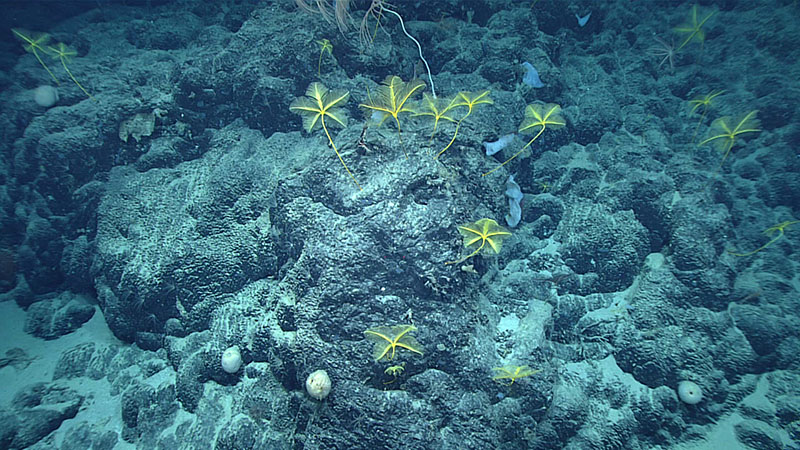
Pillow lava formations with sediment ponds were abundant on Dive 06 of the 2021 North Atlantic Stepping Stones expedition, and they were often covered in fields of stalked crinoids, as shown in this scene from a depth of 2,126 meters (6,975 feet). Image courtesy of NOAA Ocean Exploration, 2021 North Atlantic Stepping Stones: New England and Corner Rise Seamounts. Download largest version (jpg, 1.6 MB).
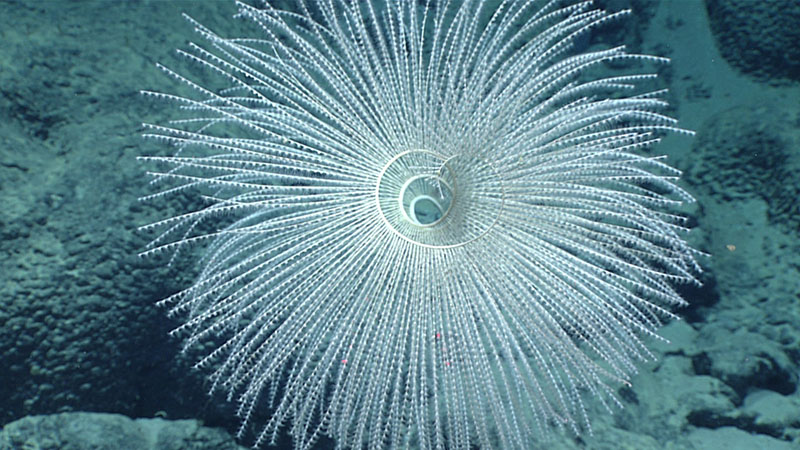
This image shows the beautiful and characteristic spiral shape of the appropriately named octocoral, Iridogorgia magnispiralis. Dive 06 marked our first sighting of this species during the 2021 North Atlantic Stepping Stones expedition. During this dive, we also saw corals in the genera Desmophyllum, Metallogorgia, Acanella, Paramuricea, and Stauropathes for the first time on the expedition. Image courtesy of NOAA Ocean Exploration, 2021 North Atlantic Stepping Stones: New England and Corner Rise Seamounts. Download largest version (jpg, 1.1 MB).
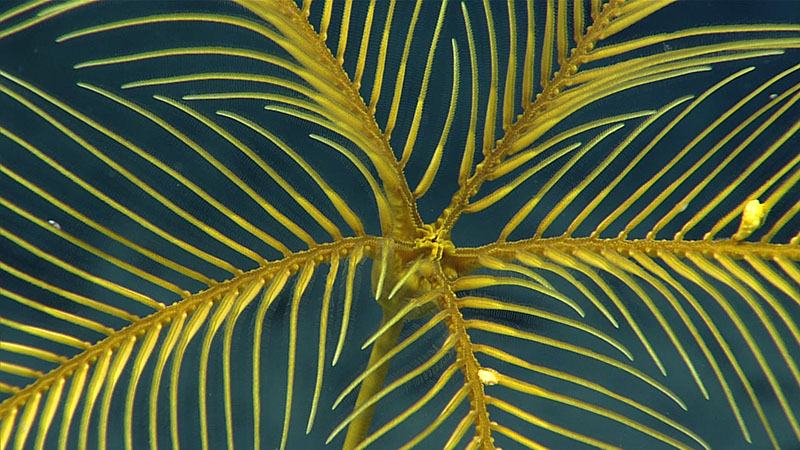
A close look at a yellow stalked crinoid. All crinoids are suspension feeders, subsisting on the smorgasbord of small plankton and detritus that drift past their outstretched arms. Most crinoids array their arms in a bowl or dish shape with the arm tips flexed back into the current and the top of the stalk bent so that the central mouth, visible in this image, faces away from the current. In addition to yellow crinoids, we also saw red and white (both stalked and unstalked) crinoids during Dive 06 of the 2021 North Atlantic Stepping Stones expedition. Image courtesy of NOAA Ocean Exploration, 2021 North Atlantic Stepping Stones: New England and Corner Rise Seamounts. Download largest version (jpg, 1.3 MB).
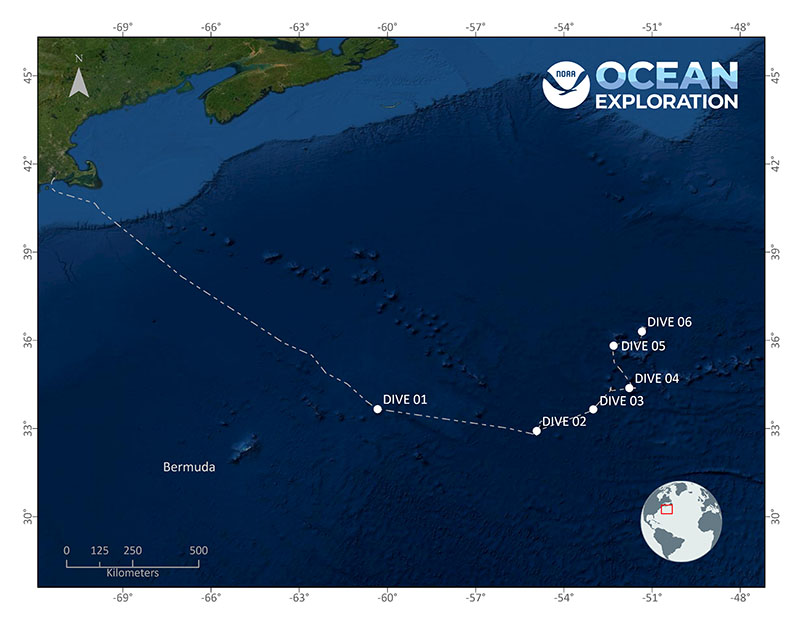
Location of Dive 06 of the 2021 North Atlantic Stepping Stones expedition on July 9, 2021. Map courtesy of NOAA Ocean Exploration, 2021 North Atlantic Stepping Stones: New England and Corner Rise Seamounts. Download largest version (jpg, 3 MB).
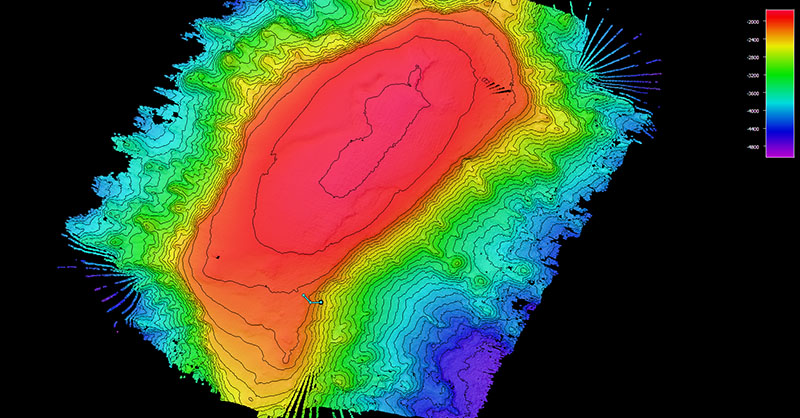
Image showing the dive track of Dive 06 of the 2021 North Atlantic Stepping Stones expedition. Scale is water depth in meters. Image courtesy of NOAA Ocean Exploration, 2021 North Atlantic Stepping Stones: New England and Corner Rise Seamounts. Download largest version (jpg, 1.6 MB).